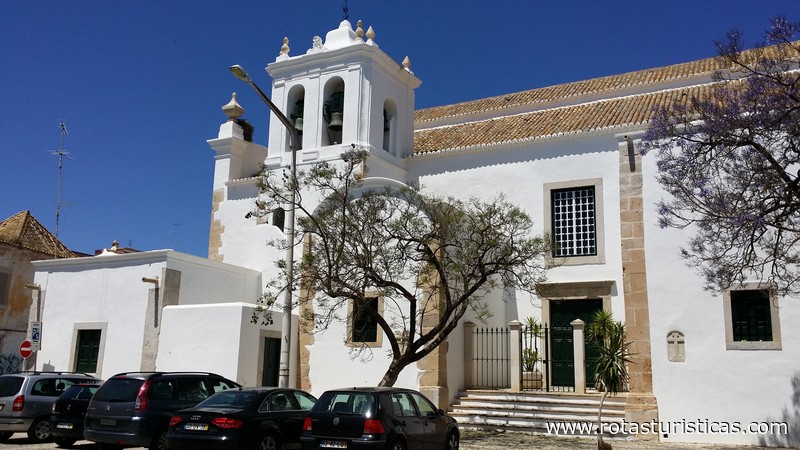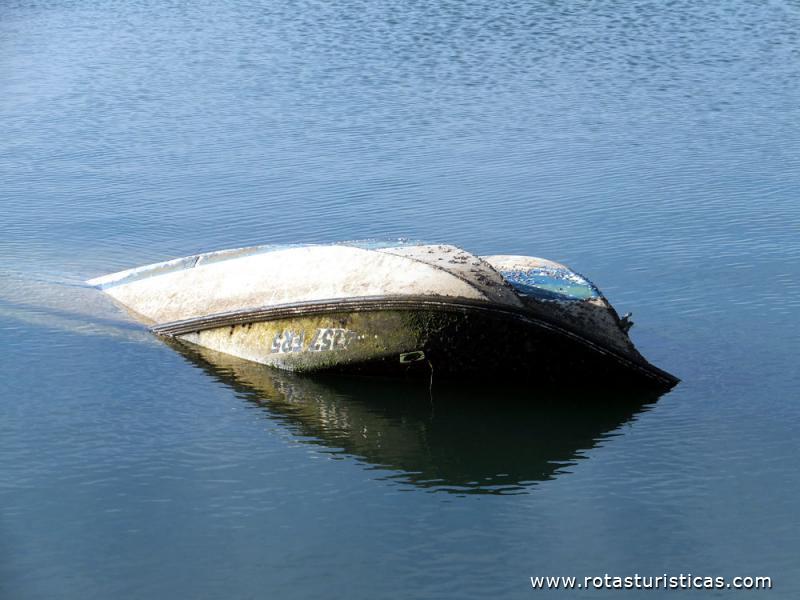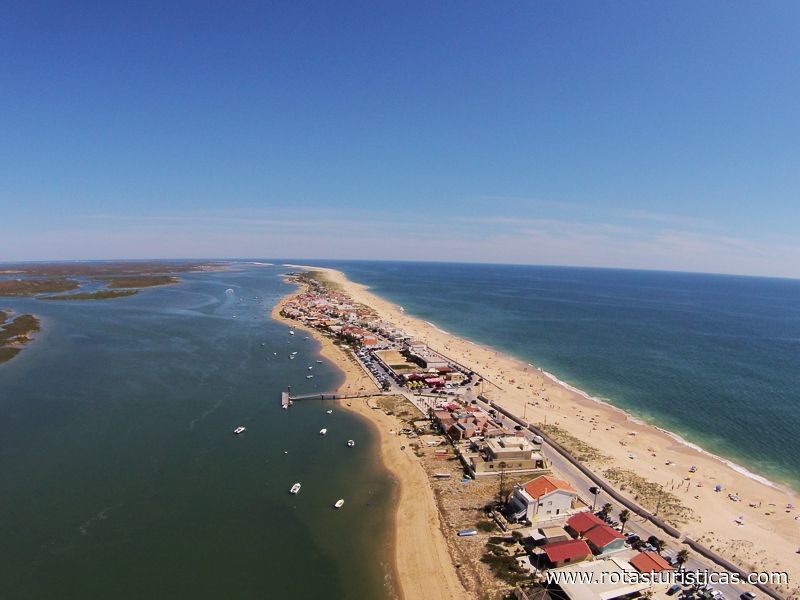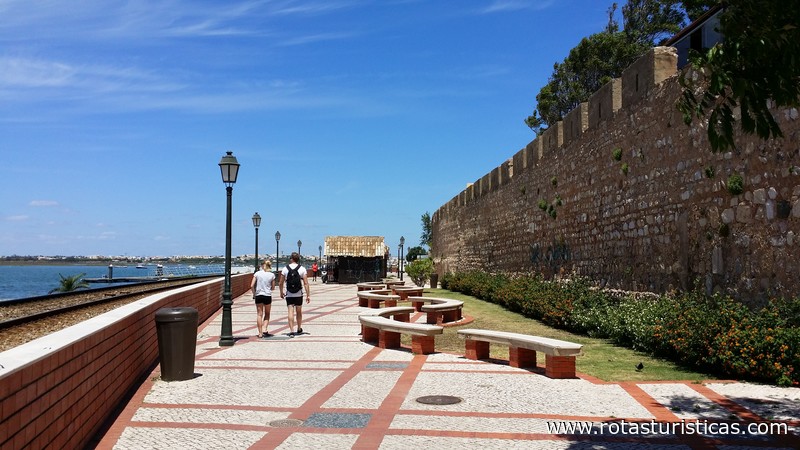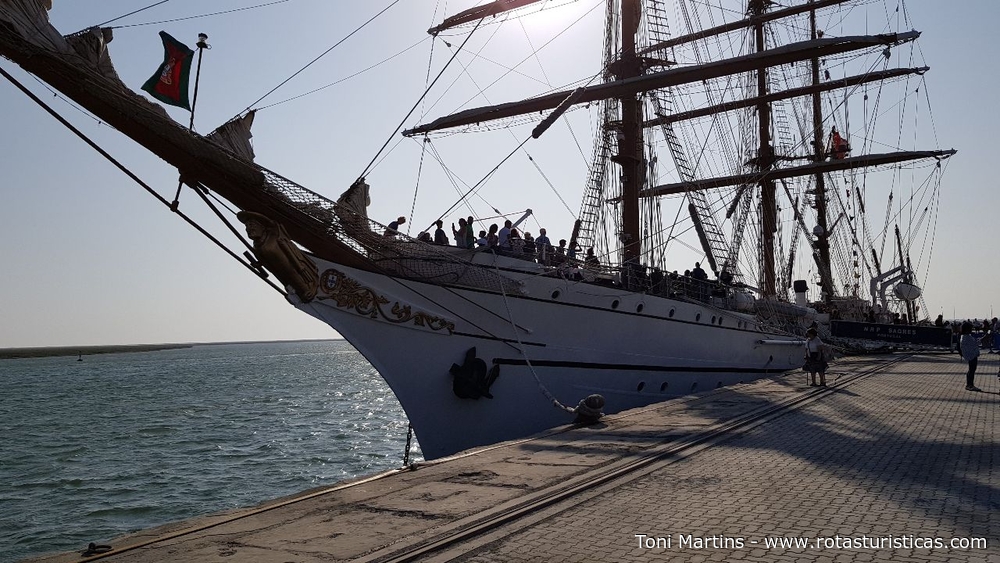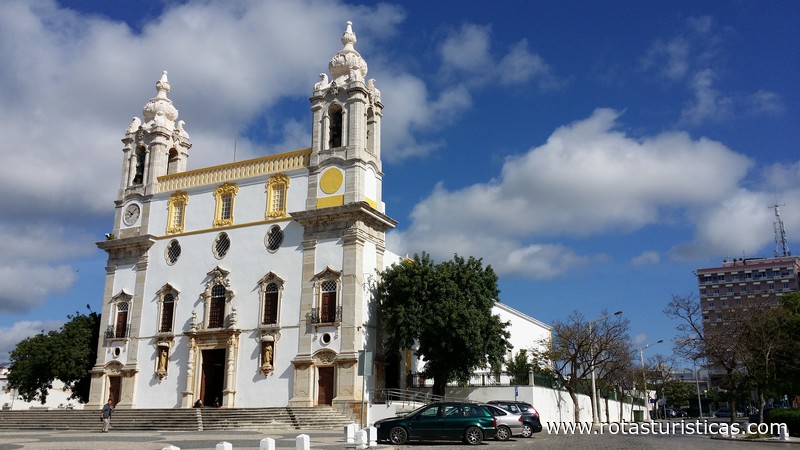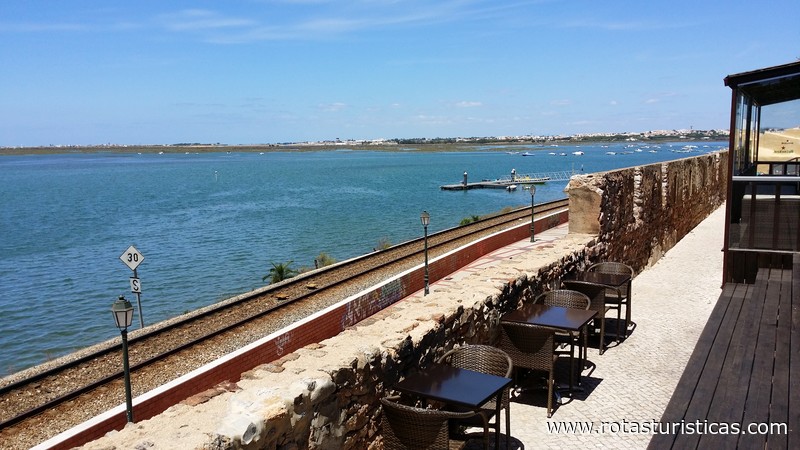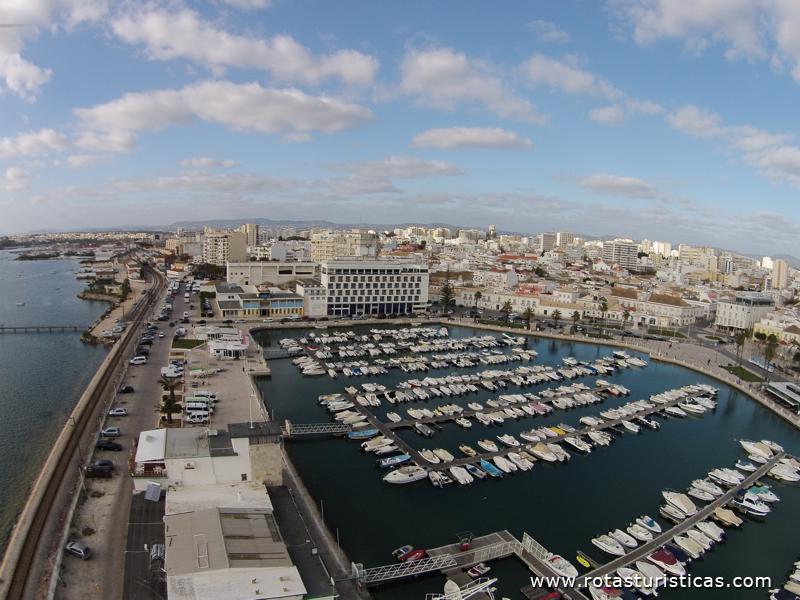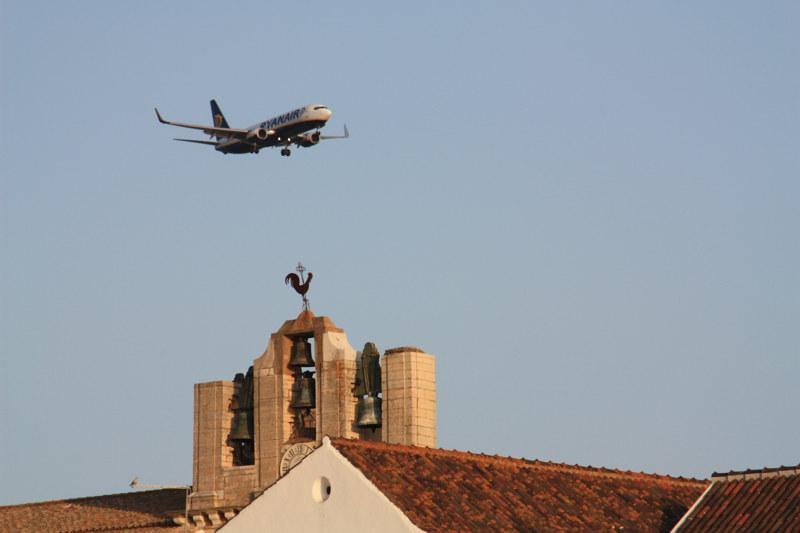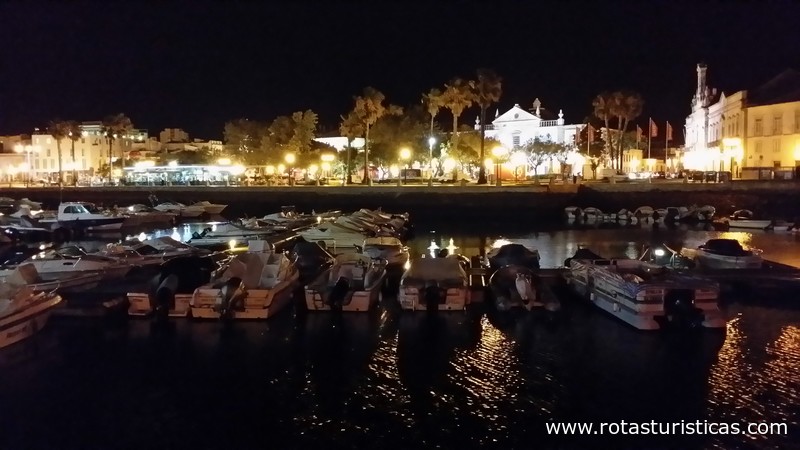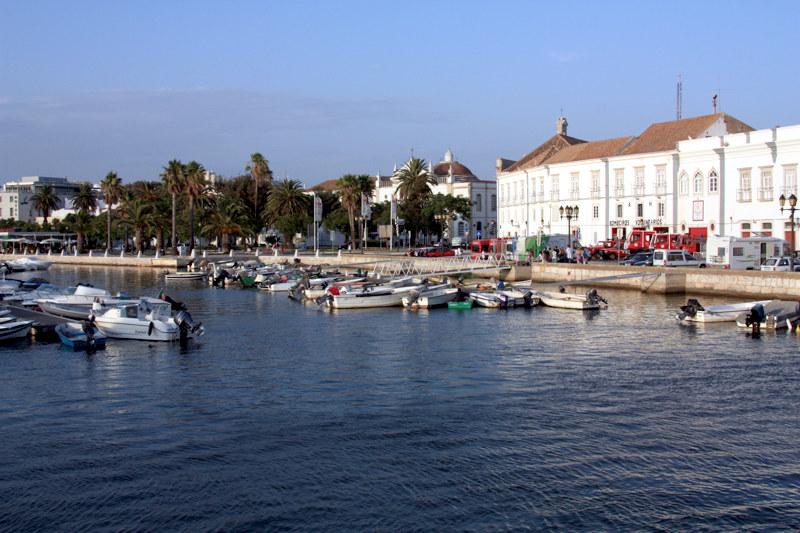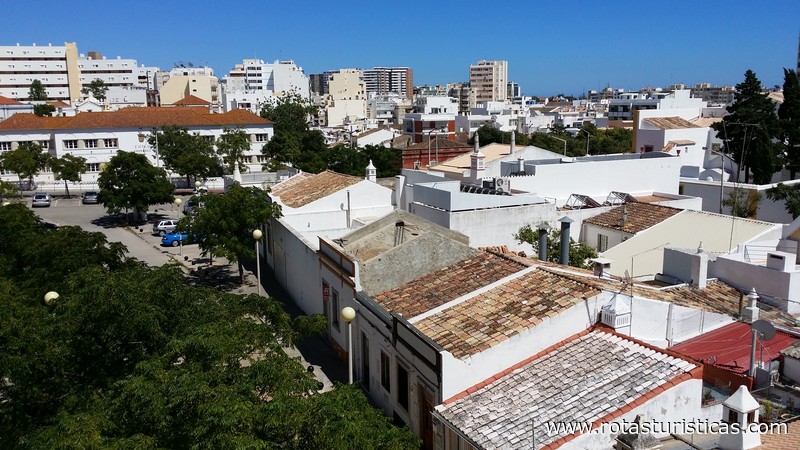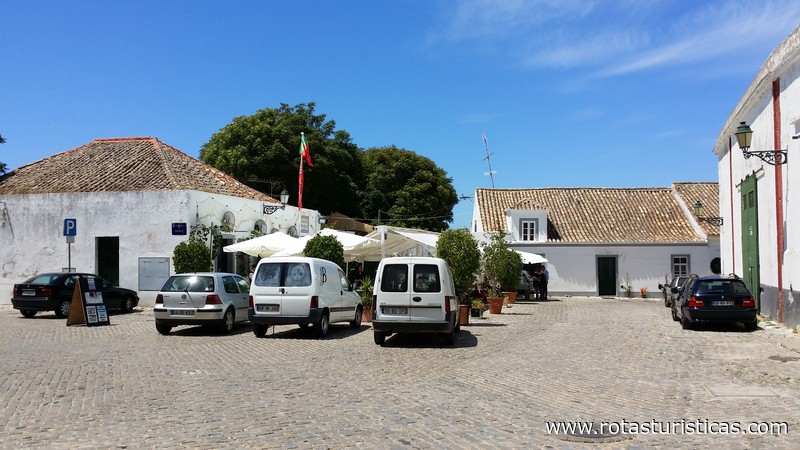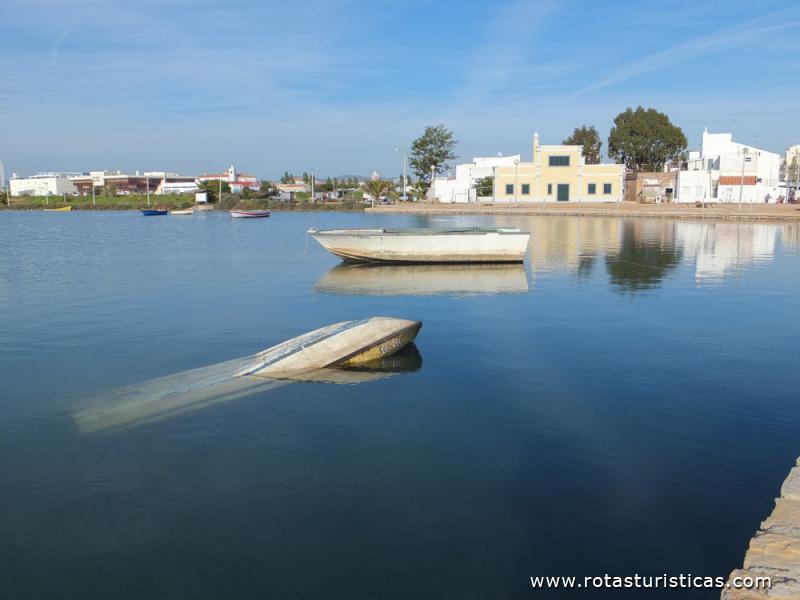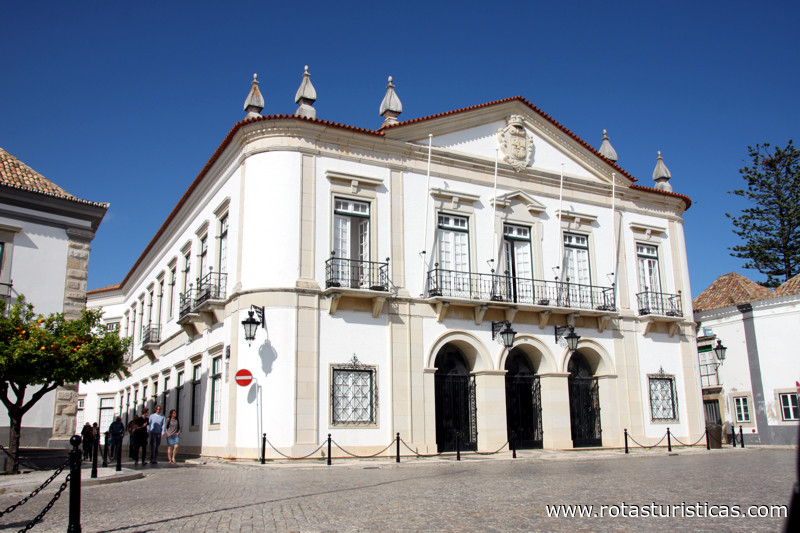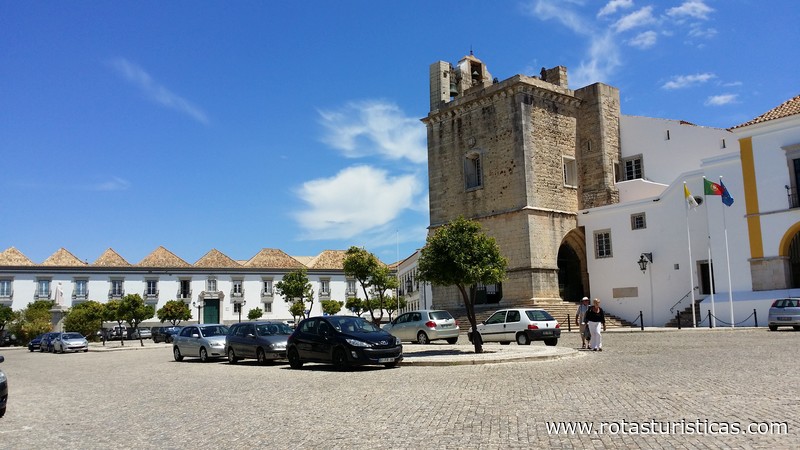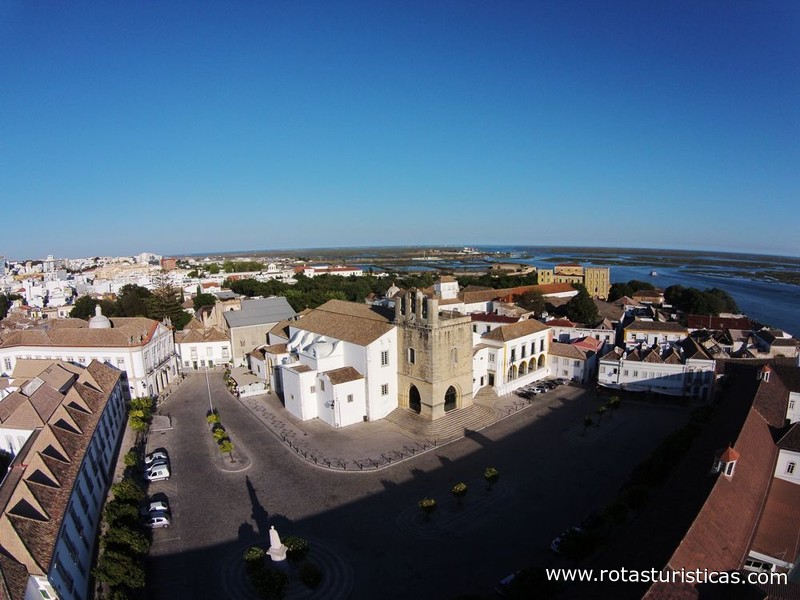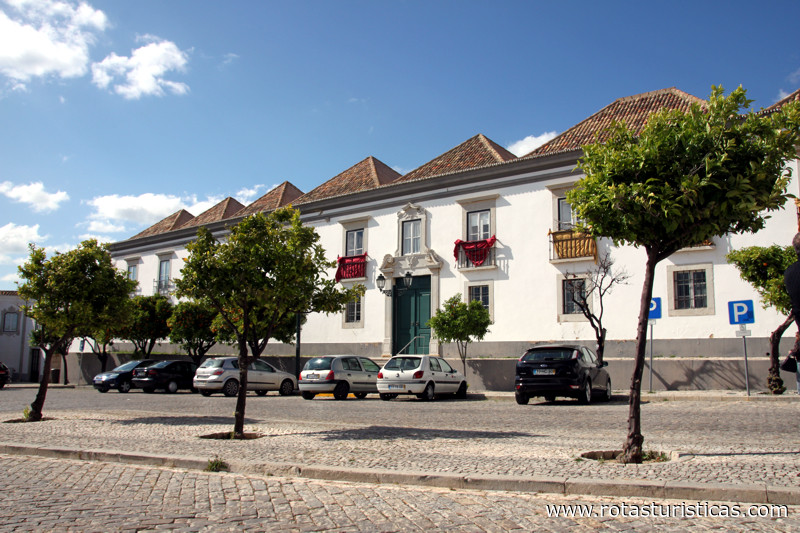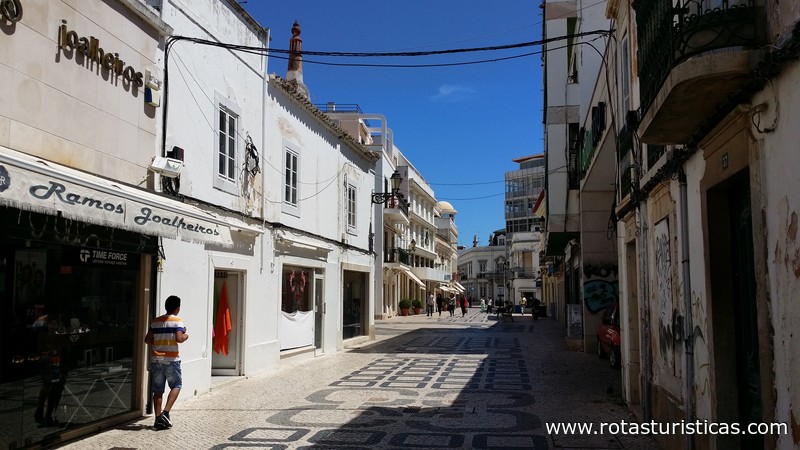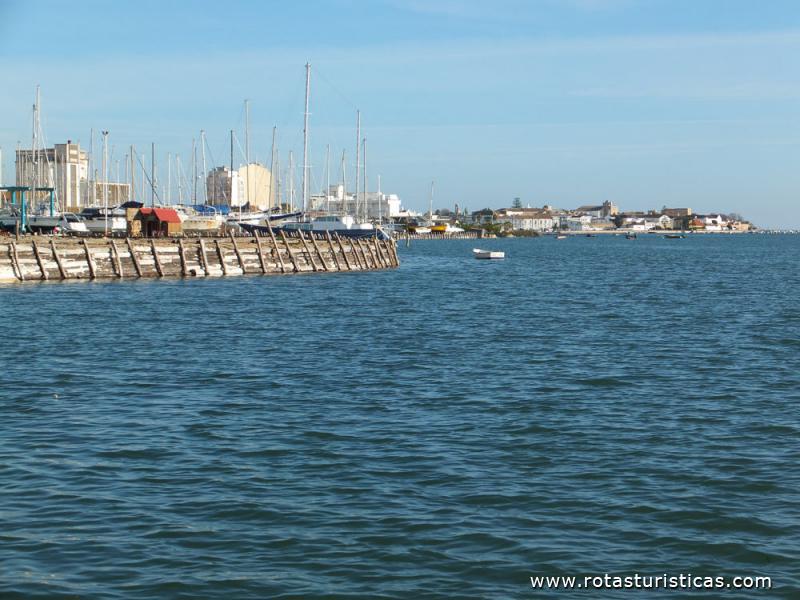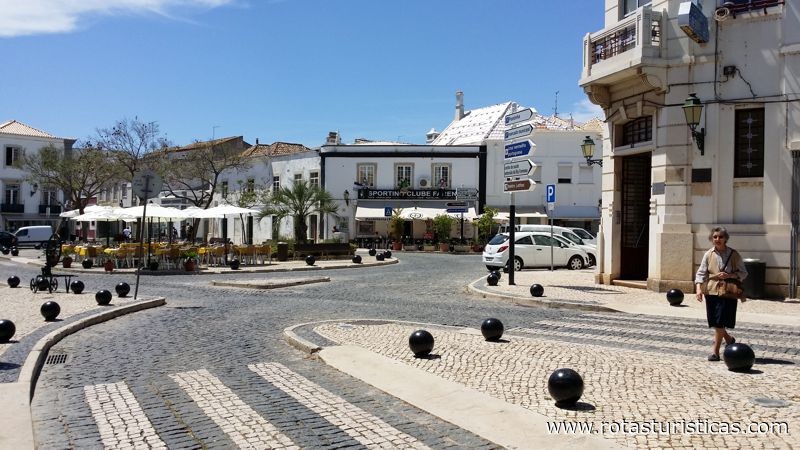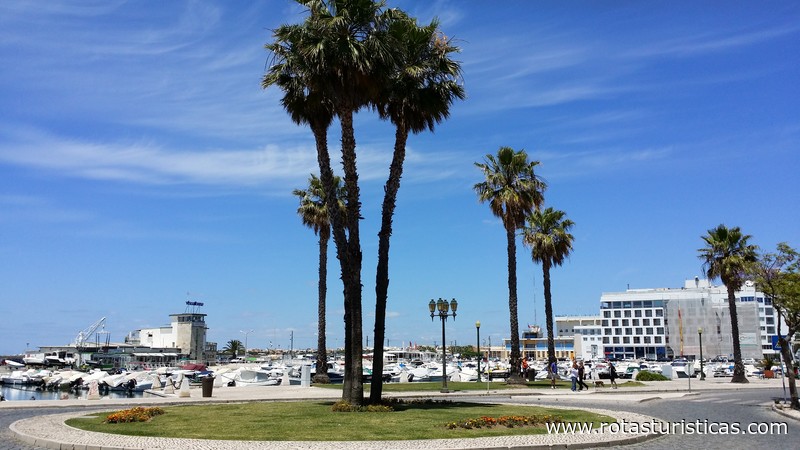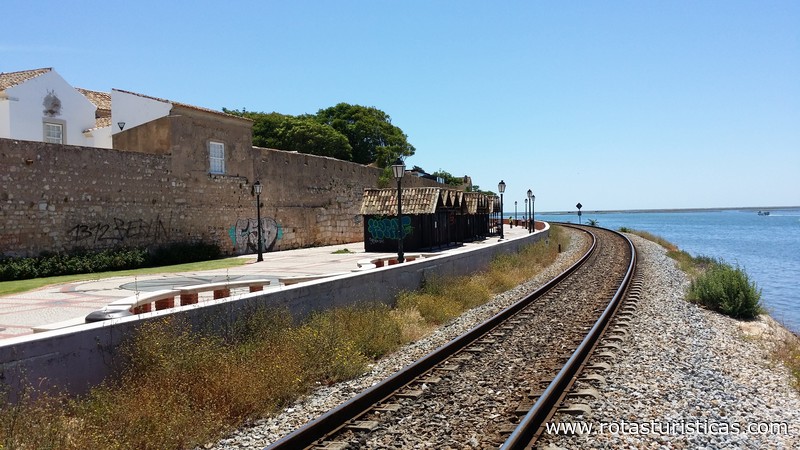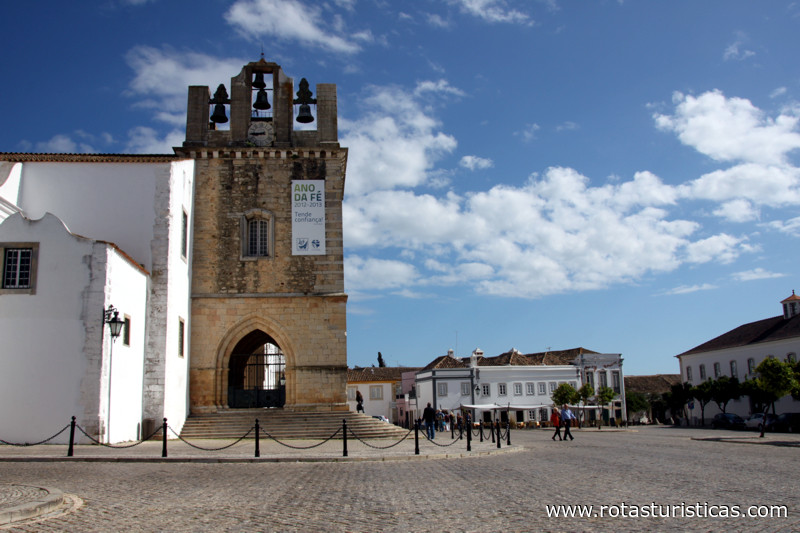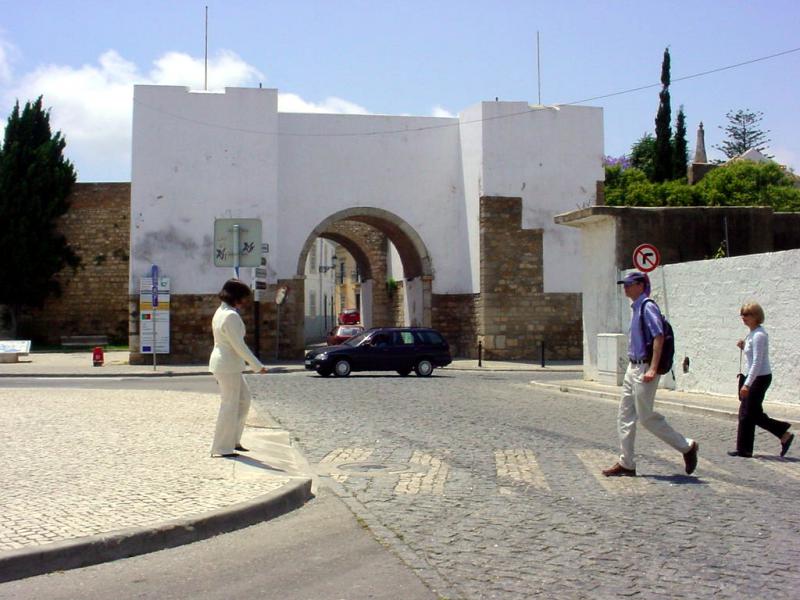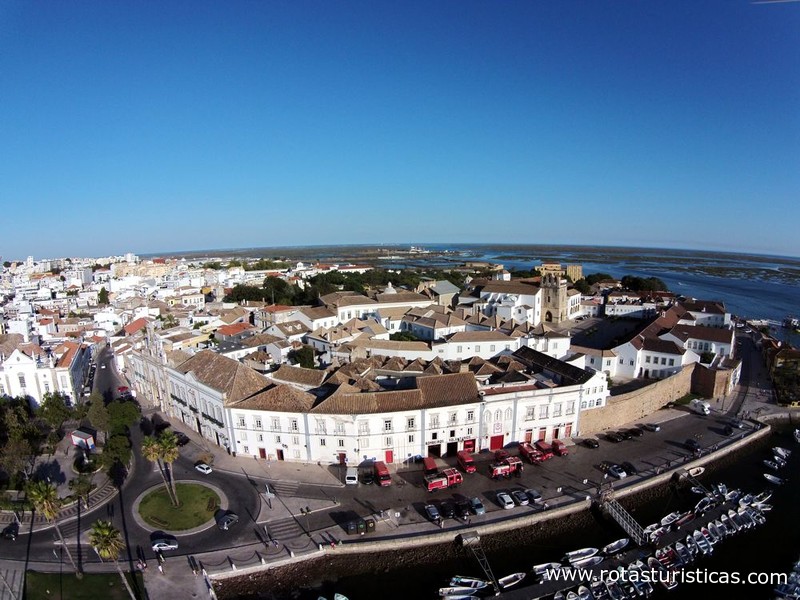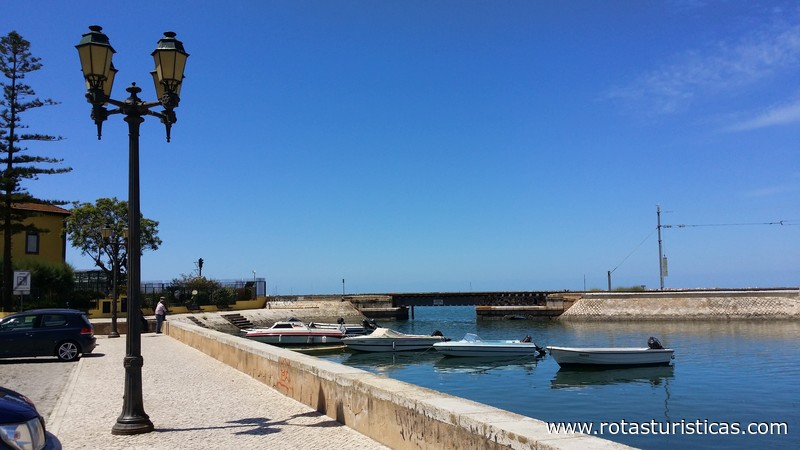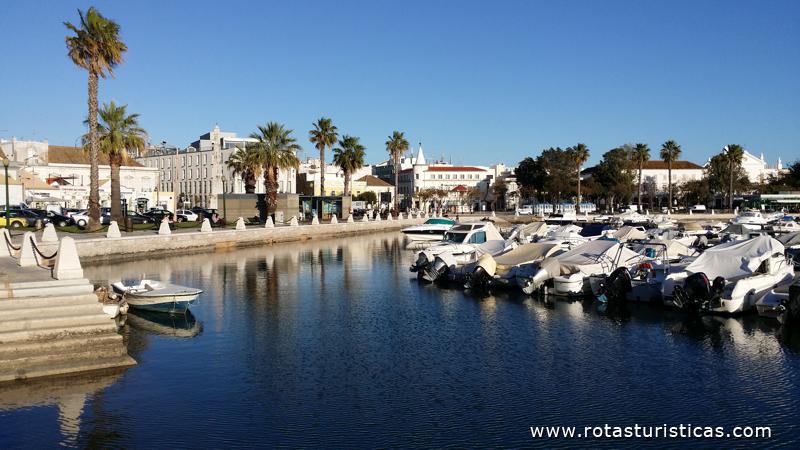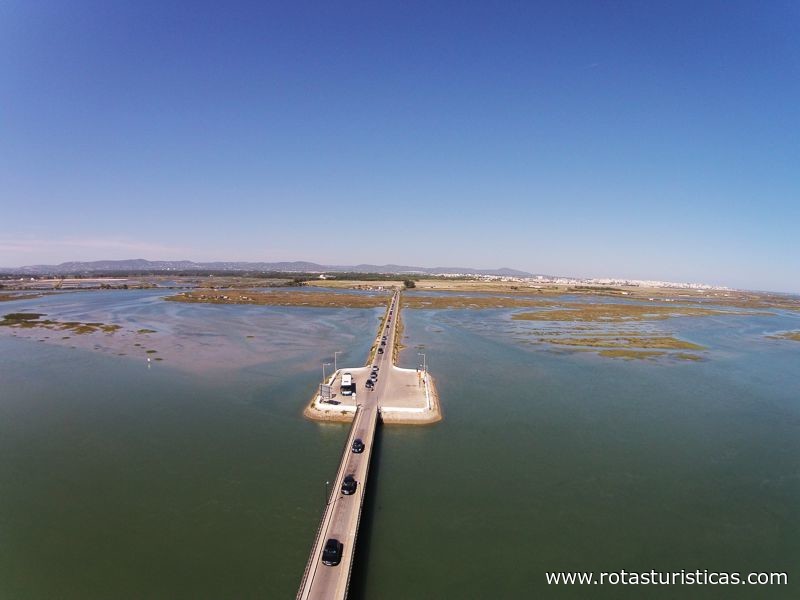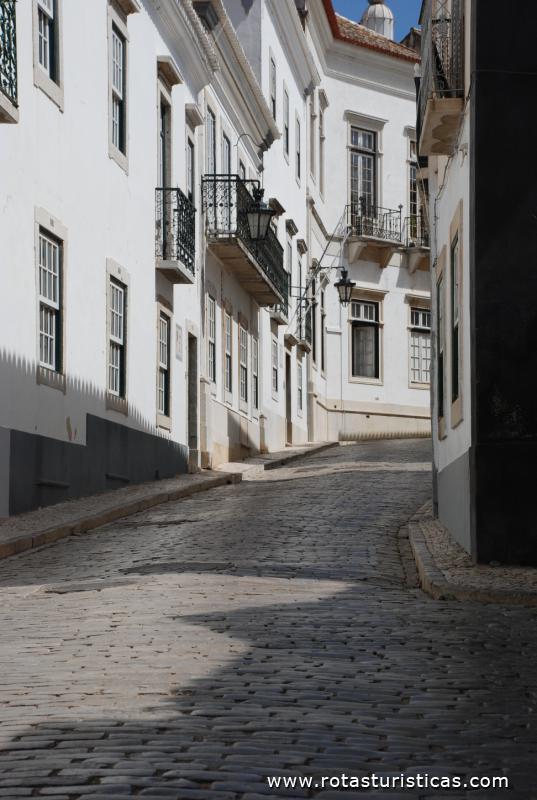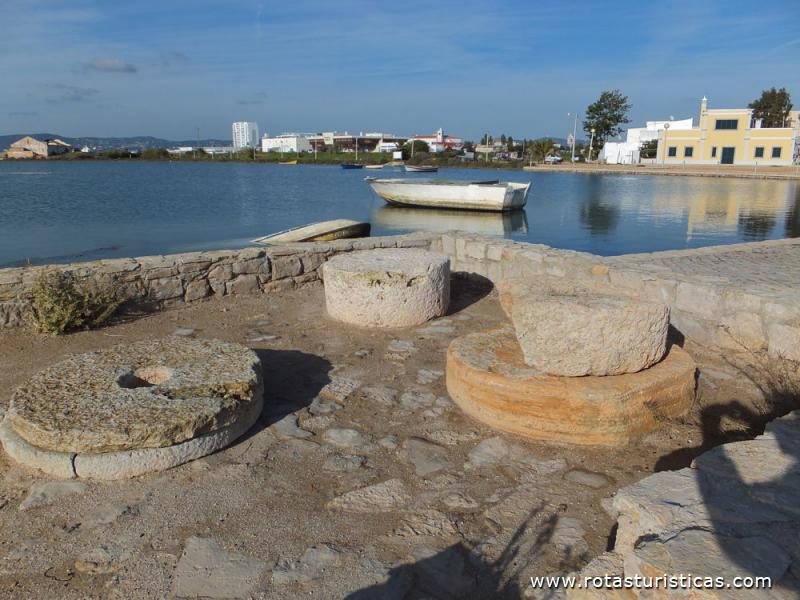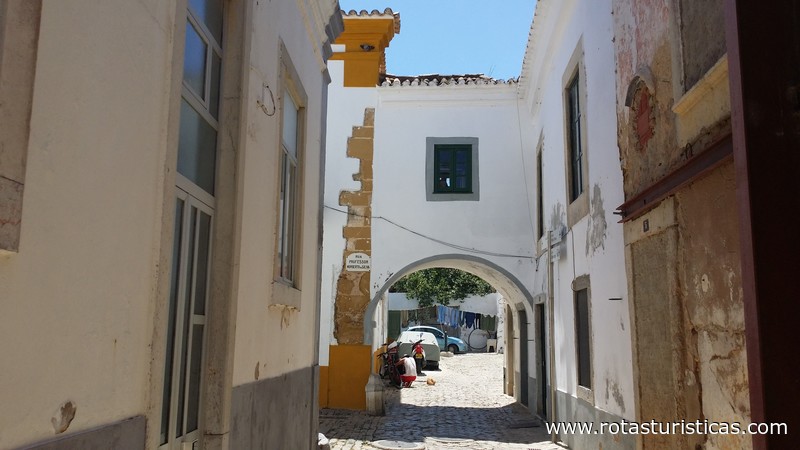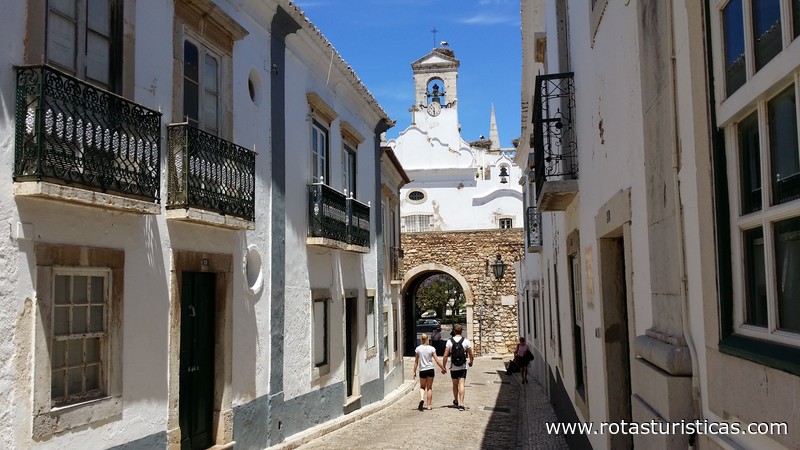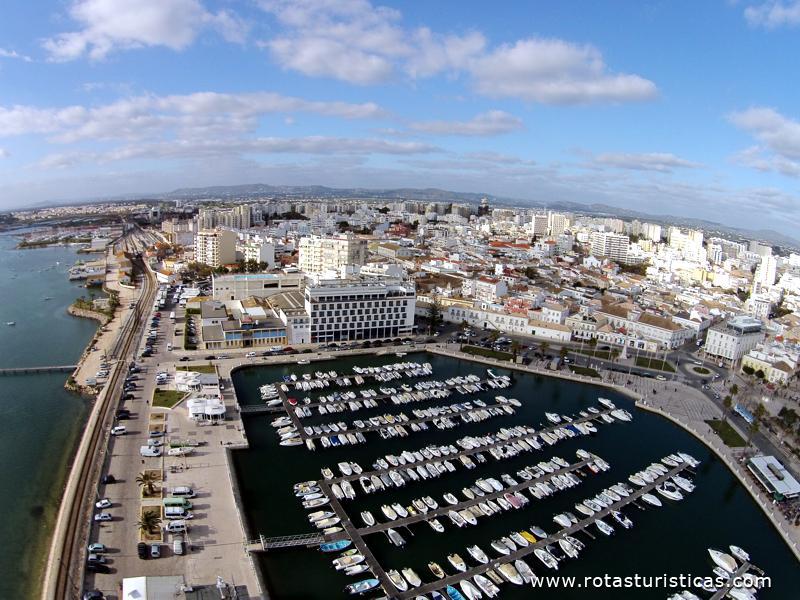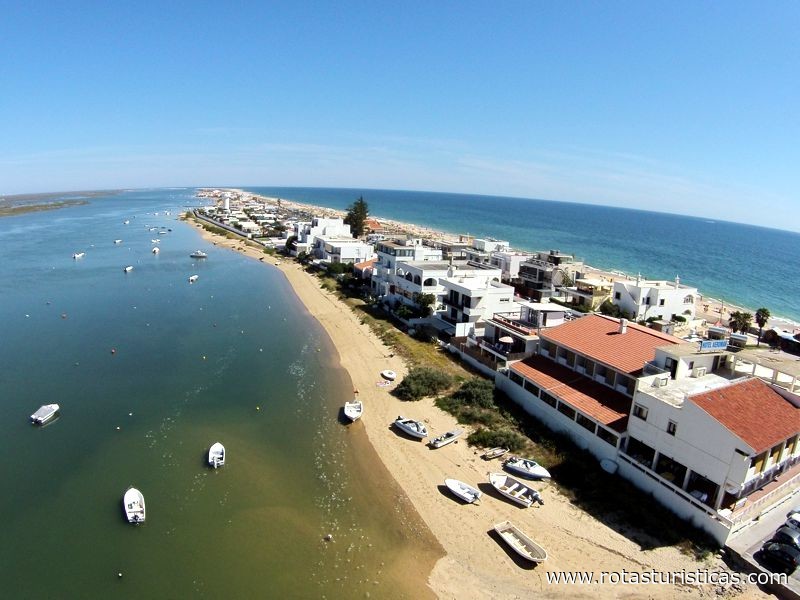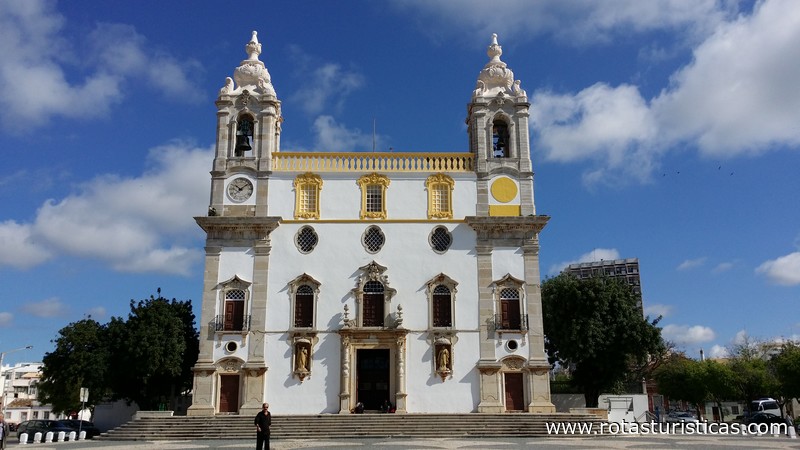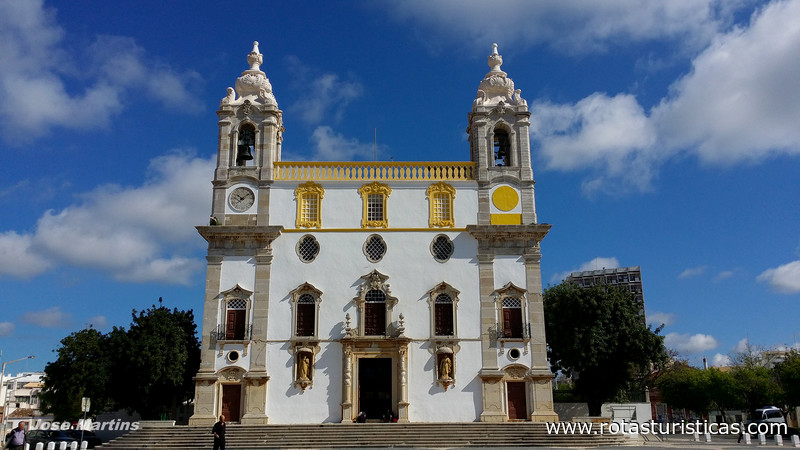Pictures of: Faro - Algarve
Location map
Airports
Hotels and other Accommodation
Golf Courses
What to visit
Where to Eat
Where to have fun
Consulates & Embassies
World Nomads
The Travel Insurance with the largest coverage

The Travel Insurance with the largest coverage

Faro
Faro (originally called Santa Maria de Faro) is a Portuguese city, capital of the Faro District, the region, sub-region and also the former province of the Algarve, which occupies an area of 5,412 km². The municipality is limited to the north and west by the municipality of São Brás de Alportel, to the east by Olhão, to the west by Loulé and to the south it has coast in the Atlantic Ocean. Through Faro Airport, the city is the second largest external entrance of the country (after Lisbon), which gives it a strongly cosmopolitan valence.
Tourism
To get to know the city and its essence, it is best to stroll through its streets, maybe wander around Faro discovering "The Other Side of the Center" to the Municipal Theater of Faro. Another suggestion is a visit to the "Old Town". No less interesting are our suggestions for tours, the "Village of Estoi" and village of "Santa Barbara de Nexe and Vistas".
Besides Faro has a diversified built and religious heritage, it is a county with a natural setting par excellence, meeting conditions for the practice of nautical and nature tourism. To enjoy the Natural Park of Ria Formosa, one of the 7 Natural Wonders. The islands of the Ria Formosa. For the islands there are regular transportation routes.
Boat to the islands
The endogenous characteristics of the Ria allow the practice of a set of activities, developed by companies of tourist animation, such as: kytesurf, canoeing, windsurfing, rowing, boat trips, bird watching, giving the visitor unique moments of sharing with the nature.
The companies of tourist animation also develop activities in the city and in the interior of the county. To better know the city, there are also the routes organized by the tourist animation companies that promote the "tourist trains", in the form of train or in carriages pulled by solipeds.
Nature and green spaces
The municipality of Faro is composed of two distinct areas, the coast, where the Ria Formosa Natural Park and the Baroque are located, characterized by slopes and valleys, where there are still some typical Algarvian vegetable species, namely carob trees, olive trees, orange trees, almond trees .
The Natural Park of Ria Formosa was created by Decree-Law no. 373/87 of 8 December and considered one of the 7 Natural Wonders of Portugal. The park is made up of a lagoon system, in which stands a coastal dune cordon, formed by peninsulas and sandy islands that protect a vast area of marsh, canals and islets. Annually many migratory waterbird species, moving from Northern Europe, choose this important ecosystem to stay during the winter. Some of the species that can be observed are the flamingo, the tern, the chilreta, the tailor, the piadeiras, finches, among others.
In addition to birdwatching, many other recreational and leisure activities can be practiced in the Ria, and this area is also privileged for the development of economic activities such as fishing, shellfish, mollusc and pisciculture.
In the city there are some gardens and green spaces such as the Manuel Bivar Garden, the Jardim da Alameda João de Deus, the Mata do liceu.
Architectural Heritage:
Old Customs House, Arco da Vila, Faro District Archives, Atelier Gomes da Costa, Bank of Portugal, António Ramos Rosa Municipal Library, Aliança Coffee Shop, Faro Harbor Port, House of the former Pestana Street, Casa das Agafatas, Casa das Patojas , House of Fresco / Barn of San Francisco, House of Mateus of Silveira, House of the Lieutenant João de Carvalho, House Lamprier, Jewish Historical Center of Faro, Sixteenth Century Fence, Police Command of Public Security, Maritime Commitment, Building Sun, Brewery, Grinding Mill, Walls, City Hall, Belmarço Mansion, Palacel Doglioni, Bívar Palace, Estoi Palace, Captain - Mor Palace, Fialho Palace, Guerreirinho Palace, Judicial Palace, Arab Gate, Revelim, Lethes Theater, Municipal Theater, Torres Albarrãs, Byzantine Towers.
Religious and Cultural Heritage:
Convent of Santo António dos Capuchos, Hermitage of Our Lady of Hope, Hermitage of Our Lady of Ó, Hermitage of Our Lady of the Foot of the Cross, Hermitage of Our Lady of Rest, Hermitage of St. António do Alto, Hermitage of São Luís, Ermida São Sebastião Hermitage, Hermitage of Sta. Catarina, Hermitage of the Foot of the Cross, Church of the Misericórdia, Church of the Order Terceira do Carmo, Church of the Cathedral, Church and cloister of the convent of the Third Order of Saint Francis, Mother Church Conceiçà £ o, Igreja Matriz de Estoi, Igreja Matriz de Santa Bárbara de Nexe, Igreja Matriz de São Pedro, Episcopal Palace, Episcopal Seminary, Living Science Center, Train Municipal Gallery, Ramalho Ortigão Maritime Museum, Faro Municipal Museum - Our Lady of the Assumption, Regional Museum of the Algarve, Ruins of Milreu.
Besides Faro has a diversified built and religious heritage, it is a county with a natural setting par excellence, meeting conditions for the practice of nautical and nature tourism. To enjoy the Natural Park of Ria Formosa, one of the 7 Natural Wonders. The islands of the Ria Formosa. For the islands there are regular transportation routes.
Boat to the islands
The endogenous characteristics of the Ria allow the practice of a set of activities, developed by companies of tourist animation, such as: kytesurf, canoeing, windsurfing, rowing, boat trips, bird watching, giving the visitor unique moments of sharing with the nature.
The companies of tourist animation also develop activities in the city and in the interior of the county. To better know the city, there are also the routes organized by the tourist animation companies that promote the "tourist trains", in the form of train or in carriages pulled by solipeds.
Nature and green spaces
The municipality of Faro is composed of two distinct areas, the coast, where the Ria Formosa Natural Park and the Baroque are located, characterized by slopes and valleys, where there are still some typical Algarvian vegetable species, namely carob trees, olive trees, orange trees, almond trees .
The Natural Park of Ria Formosa was created by Decree-Law no. 373/87 of 8 December and considered one of the 7 Natural Wonders of Portugal. The park is made up of a lagoon system, in which stands a coastal dune cordon, formed by peninsulas and sandy islands that protect a vast area of marsh, canals and islets. Annually many migratory waterbird species, moving from Northern Europe, choose this important ecosystem to stay during the winter. Some of the species that can be observed are the flamingo, the tern, the chilreta, the tailor, the piadeiras, finches, among others.
In addition to birdwatching, many other recreational and leisure activities can be practiced in the Ria, and this area is also privileged for the development of economic activities such as fishing, shellfish, mollusc and pisciculture.
In the city there are some gardens and green spaces such as the Manuel Bivar Garden, the Jardim da Alameda João de Deus, the Mata do liceu.
Architectural Heritage:
Old Customs House, Arco da Vila, Faro District Archives, Atelier Gomes da Costa, Bank of Portugal, António Ramos Rosa Municipal Library, Aliança Coffee Shop, Faro Harbor Port, House of the former Pestana Street, Casa das Agafatas, Casa das Patojas , House of Fresco / Barn of San Francisco, House of Mateus of Silveira, House of the Lieutenant João de Carvalho, House Lamprier, Jewish Historical Center of Faro, Sixteenth Century Fence, Police Command of Public Security, Maritime Commitment, Building Sun, Brewery, Grinding Mill, Walls, City Hall, Belmarço Mansion, Palacel Doglioni, Bívar Palace, Estoi Palace, Captain - Mor Palace, Fialho Palace, Guerreirinho Palace, Judicial Palace, Arab Gate, Revelim, Lethes Theater, Municipal Theater, Torres Albarrãs, Byzantine Towers.
Religious and Cultural Heritage:
Convent of Santo António dos Capuchos, Hermitage of Our Lady of Hope, Hermitage of Our Lady of Ó, Hermitage of Our Lady of the Foot of the Cross, Hermitage of Our Lady of Rest, Hermitage of St. António do Alto, Hermitage of São Luís, Ermida São Sebastião Hermitage, Hermitage of Sta. Catarina, Hermitage of the Foot of the Cross, Church of the Misericórdia, Church of the Order Terceira do Carmo, Church of the Cathedral, Church and cloister of the convent of the Third Order of Saint Francis, Mother Church Conceiçà £ o, Igreja Matriz de Estoi, Igreja Matriz de Santa Bárbara de Nexe, Igreja Matriz de São Pedro, Episcopal Palace, Episcopal Seminary, Living Science Center, Train Municipal Gallery, Ramalho Ortigão Maritime Museum, Faro Municipal Museum - Our Lady of the Assumption, Regional Museum of the Algarve, Ruins of Milreu.
Gastronomy
The confection of farense cuisine, is based on the products of the sea and the countryside. The specialty is the rice of linguine and the dessert the Dom Rodrigo or the morgado of almond.
The typical dishes of Faro are:
- Carapaus
- Leg of mutton in the pot
- Pork with clams
- "papas de milho", better known as Xarém
- Peas with eggs in the Algarve
- Stuffed partridge
- Fried rabbit
- Cooked grain (grain dinner)
- Squids stuffed with Algarvia
- Baked octopus
- Tomato Tuna Steaks
- Algarve fava beans
- Canja with conquilhas
- Garlic gazpacho
- Carrots in the Algarve
In confectionery we have:
- "Cheese" of Fig and almond
- Fruits / animals of almond paste
- Cuddly cake
- Stars of fig and almond
- Folars
- Orange Pudding
- Don Rodrigo
The typical dishes of Faro are:
- Carapaus
- Leg of mutton in the pot
- Pork with clams
- "papas de milho", better known as Xarém
- Peas with eggs in the Algarve
- Stuffed partridge
- Fried rabbit
- Cooked grain (grain dinner)
- Squids stuffed with Algarvia
- Baked octopus
- Tomato Tuna Steaks
- Algarve fava beans
- Canja with conquilhas
- Garlic gazpacho
- Carrots in the Algarve
In confectionery we have:
- "Cheese" of Fig and almond
- Fruits / animals of almond paste
- Cuddly cake
- Stars of fig and almond
- Folars
- Orange Pudding
- Don Rodrigo
Weather
As for the climate, it is Mediterranean, a climate where the temperature is mild throughout the year, a climate where we can enjoy the sun more than 300 days a year, and in which the months that are truly rainy are reduced by two, November and December. The temperature in the summer, during the day goes between 25 and 30 degrees, and between 15 and 20 degrees in the winter, with exceptions. During the night, winter minimums are around 6 or 7 degrees and in the summer between 15 and 20 degrees.
The hottest months are July and August. The wettest months are November and December. The coldest months are January and February.
The highest and lowest temperatures recorded in Faro in the period 1971-2000 were 39.8 ° C and -1.4 ° C. However, there are records of 42,5 ° C in 2004.
The hottest months are July and August. The wettest months are November and December. The coldest months are January and February.
The highest and lowest temperatures recorded in Faro in the period 1971-2000 were 39.8 ° C and -1.4 ° C. However, there are records of 42,5 ° C in 2004.
Other tourist destinations in:
Portugal
Portugal
Other world tourist destinations
Why to book with BOOK HOTEL LISBOA
The best prices
Our partnerships with the world´s largest operators offer research on the best market prices.
More options
At Rotas Turisticos you can book the hotel, buy the air ticket, book the transfer from the airport to the hotel and vice versa, book the local excursions, rent the car, take travel insurance and consult the places to visit and where to go.
Holiday Tips & Destinations
Hundreds of holiday destinations with all the options that allow you to easily choose the destination that best suits your dream vacation.
BOOK HOTEL LISBOA
Links


